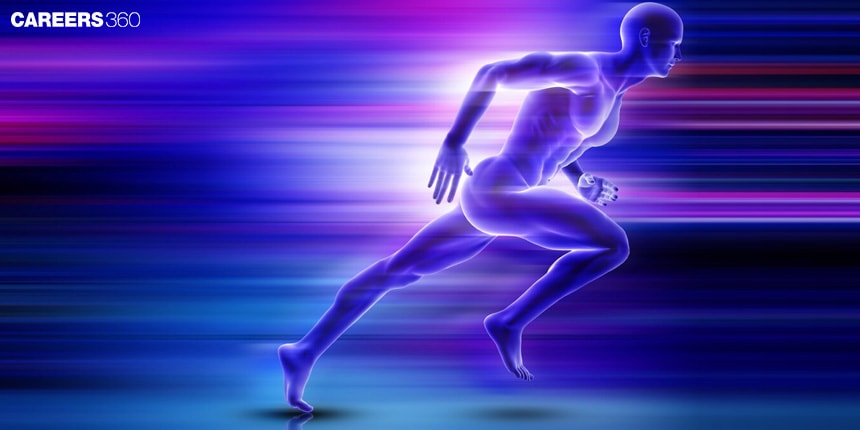Difference Between Movement And Locomotion: Types, Facts
Movement and locomotion are vital biological processes in living organisms, enabling them to interact with their environment. Movement refers to the displacement of body parts, while locomotion involves the entire body moving from one place to another. These processes are supported by specialized structures such as muscles, bones, and joints in animals. In this article, the definition of movement and locomotion, movement, locomotion, and key differences between movement and locomotion are discussed. Movement and Locomotion is a topic of the chapter Locomotion And Movement in Biology.
This Story also Contains
- Definition of Movement and Locomotion
- Movement
- Locomotion
- Key Differences Between Movement and Locomotion

Definition of Movement and Locomotion
Movement refers to a change in position or location in space by an organism or its parts and embodies many diverse biological processes. However, locomotion entails only the capability of an organism to move from one place to the other by itself. Being able to tell the difference between the two terms is quite important in the field of biological science since it explains further, different mechanisms or ways organisms put in place to implement their survival or adaptation to different conditions.
Movement
Movement means any change in the position or posture of an organism or its parts about its environment.
Types of Movements
Voluntary: Those which are controlled by conscious effort, including walking or making gestures.
Involuntary: Not controlled by conscious will; includes movement related to heartbeat, reflex actions, etc.
Cellular: It doesn't require that parts move with the environment. Includes movements of cytoplasmic streaming within cells.
Mechanism of Movements
Cellular Level: It includes the streaming of cytoplasm itself within the cells, cytoplasmic streaming.
Organismal Level: It contains muscular contraction, and ciliary movement, such as in respiratory epithelium.
Movement Examples
Examples in humans: waving the arms, blinking, and breathing.
Example in animals: The Amoeboid movement, found in the amoeba, plants' tropism or growth towards light.
Types: Bipedalism, that is, moving on two legs; quadrupedalism, or moving on four legs; flying; swimming; etc.
Also read-
Locomotion
Locomotion, in particular, is the movement of an organism from one place to another.
Types: Bipedalism, on two legs only; quadrupedalism, on four legs; flying, swimming, etc.
Mechanism of Locomotion
Musculoskeletal Systems: It deals with the coordination of bones, muscles, and joints to move.
Adaptations: Organisms develop special adaptations such as wings in birds, fins in fish, and legs in mammals to move about.
Examples of Locomotion
Human examples: Walking, running, swimming.
Animal examples: Flying by birds, crawling by insects, swimming by fish.
Key Differences Between Movement and Locomotion
It is one of the important difference and comparison articles in biology. The differences are listed below-
Movement | Locomotion | |
Definition | Change in position or posture. | Movement from one place to another. |
Mechanisms | Cellular processes, muscle contraction | Musculoskeletal systems, specialised adaptations |
Functional Purpose | Varied, includes cellular functions | Facilitates travel and navigation |
Evolutionary Role | Supports cellular functions, responses | Essential for survival, adaptation |
Also read-
| Types of Movement in the Human Body | Fibrous Joints |
| Difference between Red and White Muscle | Hinge Joint |
| Joints | Pectoral Girdle |
Recommended Video on the Difference Between Movement and Locomotion
Frequently Asked Questions (FAQs)
All changes in position are movement while locomotion is self-powered movement from one location to another.
Examples are the waving of arms, blinking in humans, amoeboid movement in animals, and plant tropisms.
Interactions with bones and joints move and facilitate locomotion brought about by the simple contraction of muscles.
Known distinctions of all these differences are important to clarify how organisms would be able to respond to their surroundings, survive through challenges, adapt to specialised movements, and have locomotor abilities.
While any change in position or posture comes under the category of movement, locomotion specifies only the ability to move from one place to another.